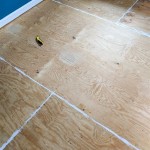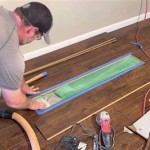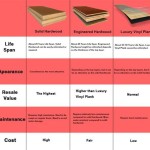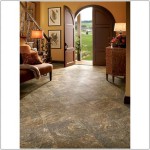Essential Aspects of Affordable Flooring Solutions for Your Home
Transforming your home's flooring can revitalize its aesthetic appeal and enhance its functionality. However, finding affordable solutions that meet your needs and budget can be a challenge. This article delves into the crucial aspects to consider when selecting cost-effective flooring options for your abode.
1. Material Considerations
The type of flooring material significantly impacts its cost. Laminate and vinyl planks are budget-friendly options that offer a high degree of durability and come in a wide range of styles to match any décor. Carpet tiles are another cost-effective option, allowing you to replace individual tiles rather than the entire carpet, saving you money in the long run.
2. Installation Costs
The installation method can also affect the overall cost of your flooring project. Floating floors, such as laminate and vinyl planks, are relatively easy to install, saving you on labor costs compared to glued-down or nailed-down flooring options. Consider DIY installation to further reduce expenses if you have the necessary skills and tools.
3. Floor Preparation
Before installing new flooring, it is crucial to ensure that your subfloor is in good condition. Leveling and smoothing the subfloor can be time-consuming and expensive. Consult with a professional to assess the condition of your subfloor and determine whether any repairs or preparations are necessary.
4. Size and Shape of Rooms
The size and shape of your rooms can influence the cost of flooring materials. Smaller rooms require less flooring, which can result in significant savings. Rooms with complex shapes or multiple angles may require more precise cutting and installation, increasing the labor costs.
5. Underlayment
Underlayment is a layer of material installed beneath the flooring to provide support, reduce noise, and enhance insulation. High-quality underlayment can add to the overall cost of your project but offers long-term benefits in terms of durability and comfort.
6. Maintenance and Repair
Consider the potential maintenance and repair costs associated with different flooring options. Carpet, for instance, requires regular vacuuming and cleaning, while hardwood floors may need occasional refinishing. Vinyl and laminate flooring are generally easy to maintain and clean, saving you time and money on upkeep.
7. Expected Wear and Tear
The level of wear and tear your flooring will experience should also be taken into account. High-traffic areas, such as entryways and living rooms, require more durable flooring options that can withstand heavy foot traffic. Consider investing in materials like porcelain tiles or engineered hardwood for these areas to minimize the need for frequent repairs or replacements.
8. Seek Professional Advice
If you are uncertain about the best flooring solution for your home, do not hesitate to consult with a flooring professional. They can assess your needs, recommend appropriate materials, and provide you with a cost estimate. Their expertise can help you make informed decisions and ensure that you achieve the desired results within your budget.

Flooring Materials To Consider Forbes Home

Flooring Ideas Update Your Floors On A Budget

Inexpensive Flooring Options Ideas Instead Of Hardwood Family Handyman

Inexpensive Flooring Options Ideas Instead Of Hardwood Family Handyman

Inexpensive Flooring Options Ideas Instead Of Hardwood Family Handyman

12 Flooring Ideas For Your Home Affordable

Inexpensive Flooring Options Ideas Instead Of Hardwood Family Handyman

Flooring Materials To Consider Forbes Home

6 Flooring Options To Consider For Your Home

25 Diy Flooring Ideas That Will Look Amazing In Your Home
See Also







